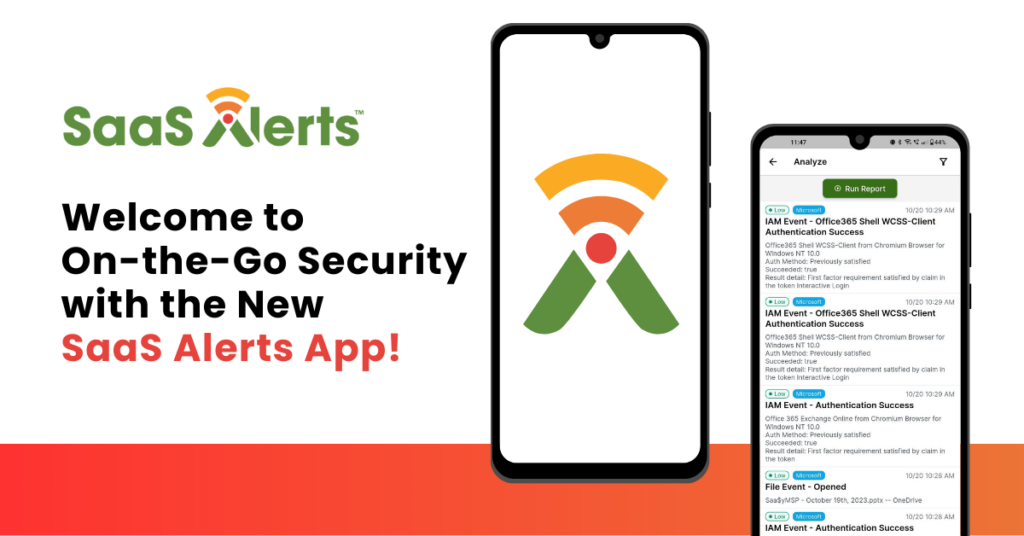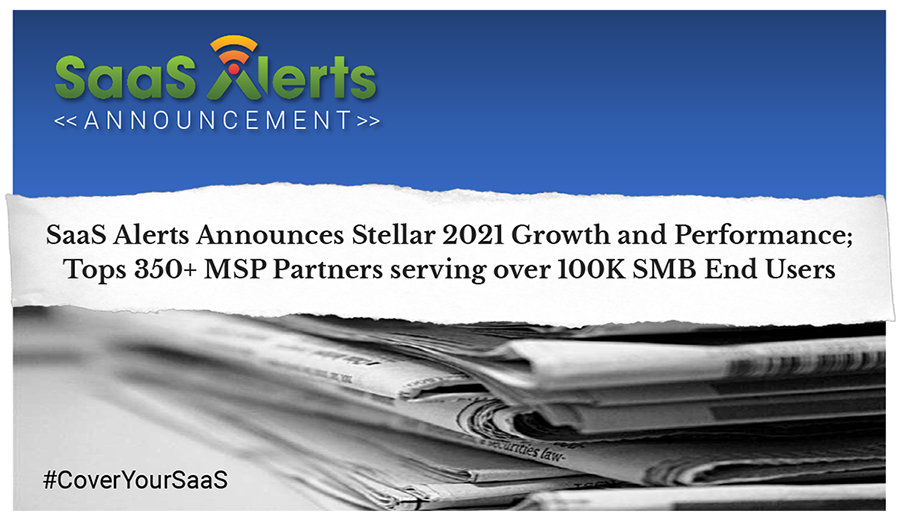SaaS Application Monitoring Best Practices
With organizations using an average of 73 SaaS applications, according to a Productiv report, SaaS application monitoring has become an important addition to every IT team’s playbook. With continuous insight into your managed SaaS environments, you can solve performance challenges and remediate security vulnerabilities before they interfere with business operations.
Let’s review seven SaaS monitoring best practices to help you better protect your most critical business applications.
1. Understand the Scope
Comprehensive SaaS application monitoring requires an understanding of what needs to be protected – and why. Performing a security risk assessment helps you identify all the potential threats and vulnerabilities in your environment. For example, a financial institution may be more susceptible to phishing attacks, while a healthcare provider may need to place added emphasis on preventing ransomware attacks.
Clearly defining your scope allows you to:
- Maintain security: Identify and resolve vulnerabilities within SaaS environments.
- Ensure compliance: Verify adherence to specific regulatory requirements and industry best practices.
- Reduce costs: Minimize downtime and business disruptions with the insights to address security risks proactively.
Get a SaaS cyber risk assessment.
2. Ensure Comprehensive SaaS Coverage
Fully safeguarding your end users requires monitoring all exploitable entry points in their SaaS solutions that bad actors can use to access data, eliminating any potential blindspots.
Enhance your view of SaaS environments by:
- Integrating independent tools: Third-party monitoring solutions offer more detailed insights than built-in SaaS metrics dashboards.
- Tracking API performance: Monitoring the efficiency and security of integrations ensures they run smoothly.
- Leveraging security logs: This type of data reveals unusual activity or patterns and provides valuable insights into performance issues, user behavior and potential vulnerabilities
3. Implement Proactive Measures
The most effective security strategy is to be proactive in managing risks instead of reactively solving problems. With SaaS application monitoring, you can:
- Establish performance baselines: Define the normal user behavior patterns to be able to quickly identify deviations. Understanding normal behavior makes it easier to spot irregularities that might indicate underlying problems.
- Customize security alerts: Tailor notification thresholds to match needs of your organization. For example, while logins from a European IP address may be a red flag for one business, they may not be for another with global operations.
- Educate end users: The 2023 Cloud Security Study shows human error accounts for 55% of cloud-based breaches. Ensure end users have the necessary training to spot the signs of apparent cyberattacks, such as phishing or business email compromise (BEC).
Our partner, Zephyr Networks, for example, proactively manages risks by combining best practices in cybersecurity controls with robust staff education. This means they not only use SaaS security alerts to troubleshoot issues quickly, but they also arm users with the knowledge to avoid actions that could negatively affect their cybersecurity efforts. As a result, they reduce the likelihood of breaches due to poor cyber hygiene.
Explore how to make a business case for security awareness training.
4. Automate Security Remediation
While customized cybersecurity alerts notify you of the potential risks most relevant to your users, a high volume of notifications makes prioritizing the most critical issues difficult.
Enabling specific indicators of compromise or attacks to trigger automated remediation reduces the number of actionable alerts for your team to manage. For example, a successful login from outside of an approved location would prompt your system to expire all sessions and disable future logins until you’re able to validate the activity with an end user.
The benefits of implementing automated solutions include:
- Reduced time to resolution: Streamlining remediation for repetitive alerts minimizes response time.
- Improved efficiency and resource allocation: Decreasing time spent on manual actions frees your team to focus on more complex tasks, optimizing resource usage and enhancing overall productivity.
- Minimized human error: Integrating automated processes mitigates the likelihood of human error, ensuring consistent and reliable responses to identified threats.
5. Centralize Your IT Workflows
Monitoring SaaS becomes more complex when multiple teams use different apps with customized settings. Funneling data into a central repository simplifies the process for you, improving:
- Efficiency: Integrating your monitoring processes into a single platform reduces the complexity of juggling multiple tools and platforms.
- Visibility: Gaining a complete view of all applications enables faster issue detection and provides a full picture of system performance.
- Scalability: Unifying SaaS data makes accommodating new users and applications easier, allowing your service capabilities to evolve with business needs.
6. Perform Regular Reporting
While your SaaS app performance monitoring and remediation workflows help protect end users from potential breaches, consistently pulling comprehensive reports gives you a complete picture of how your team impacts the business.
With regular reporting, you:
- Identify trends: Analyzing reports over time helps you identify potential areas for improvement. Trend analysis helps inform strategic decisions and investments.
- Demonstrate value: Highlighting how you protect and optimize the performance of SaaS applications reinforces the value you deliver.
7. Optimize Your SaaS Monitoring Strategy
Your SaaS application monitoring process isn’t a set-it-and-forget-it task, as the threat landscape constantly evolves. The FBI’s Internet Crime Complaint Center (IC3) revealed there were over 880,418 complaints related to cyberattacks in 2023 alone. Continuously refine your approach based on analysis to stay up-to-date with emerging risks.
Streamline SaaS App Monitoring
With SaaS Alerts, you can simplify your process for monitoring SaaS, combining security alerts from all your SaaS environments into a single dashboard. Our SaaS security platform:
- Monitors applications for unusual behavior, usage and data breaches
- Integrates with applications like Microsoft 365 and Google Workspace
- Automates the remediation of compromised accounts
- Provides detailed reporting of user behavior and app events
Ready to streamline your SaaS application monitoring? Get started with a 14-day free trial.






